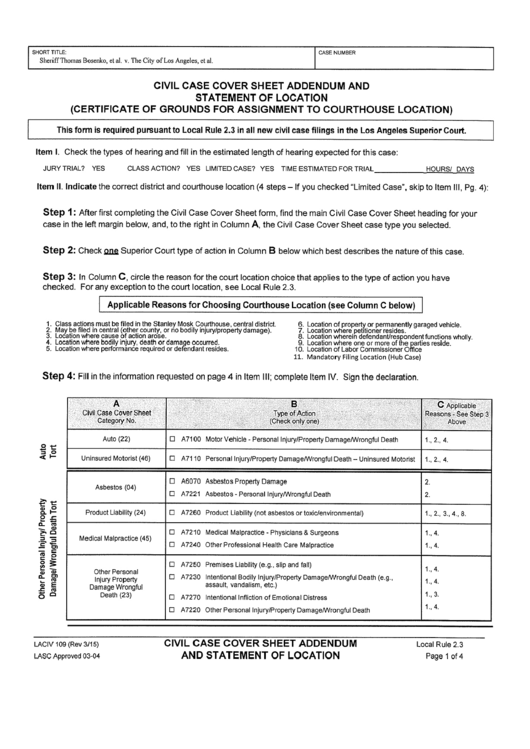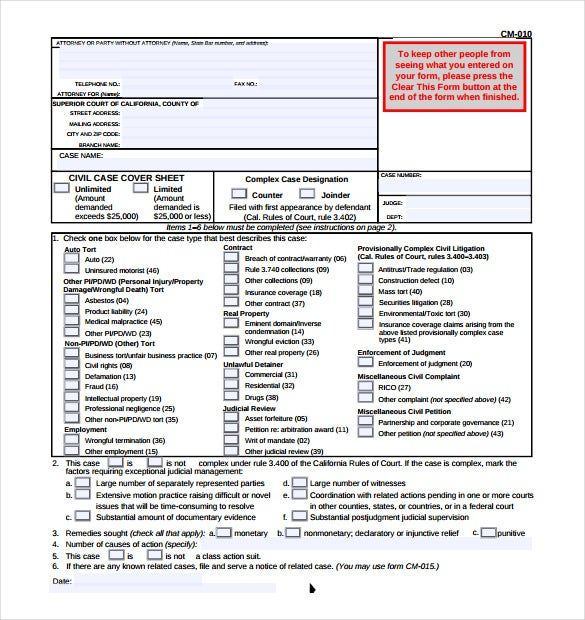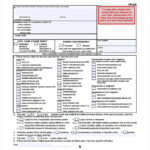Addendum Form Civil Case Ca Courts – If you’ve been chosen to represent clients in civil court cases it is possible that you will be asked by the court to complete numerous forms. Certain forms can be found online or printed from the court’s website. Some may require to be filled out in hardcopy. You may also find other forms online, however it is essential to make sure that they’re suitable for your particular situation before you utilize them.
Form with blanks to fill in
The Supreme Court Administrative Office (SCAO), which is the Supreme Court’s office, keeps an enormous inventory of incomplete court forms. These forms are classified in accordance with the nature of the legal issue. They can be searched using the name or number.
The first step in creating a legal document is finding an appropriate form that meets your needs. Certain forms separate the cases titles from the names of the parties.
Before you fill in a form or sign it please be sure to read the instructions carefully. In some cases, you may need to sign. Keep only one-sided copies. If you don’t plan to do the same thing again, you don’t need to duplicate it.
Request restricted status for electronic document
It may be difficult to get restricted status for the electronic form for civil courts. Everything from legality to conformity to a specific format standard are all considered. It’s important to refer to the Minnesota Supreme Court regulations, or the rules of your court to make sure that you’re following the rules correctly.
To file electronically the document should be legible and have an official stamp. Furthermore, the document must to be delivered to the clerk of the county within of an envelope properly addressed. If the document isn’t in order the document will be inspected to ensure its validity.
A EFCIV 23 form is required to notify everyone involved that the file is now an electronic file. In exceptional circumstances, you must also serve this form with your commencement paperwork.Additionally, you must use EDDS to submit the paperwork to the court.
Send originals of the exhibits.
It is possible that you will be required to provide copies of your exhibits to the court in some countries. However, your documents will, often be submitted online. If a printed version of your electronic files is needed for courtroom use, you will have to present it to them.
The court forms have to be filled out to the highest possible extent. A precise and complete filling out each section on the forms is mandatory. The shapes frequently consist of empty spaces. It’s a good idea for you to consult a lawyer before filling out forms if you have any questions.
Hard copy exhibits must be served on all parties with an accompanying document like the Notice of Hard Copy Exhibit Submission. A web-based solution like Odyssey File and Serve, or the EDDS mailing system could be utilized to serve.
The online forms may not be appropriate for your particular situation.
Court forms online are only available when you talk to an attorney first. It will help you understand your rights and choices. You are responsible for your legal actions if you decide not to consult with a lawyer. You could be subject to civil or disciplinary fines, including the possibility of being a lawyer without license.
On their sites, a lot of courts have self-help tools, but some do not. The Alaska Court System has developed specific forms, like. The complaint form is one of these forms, and is accessible here. There’s a second template here, including the interactive complaint form.
After you’re satisfied with the completed form, print the form and bring it to the court. There may be additional forms on the court’s website which can be downloaded. Some of these require computer software. Computer programs are designed to answer questions, collect data, and produce forms.


